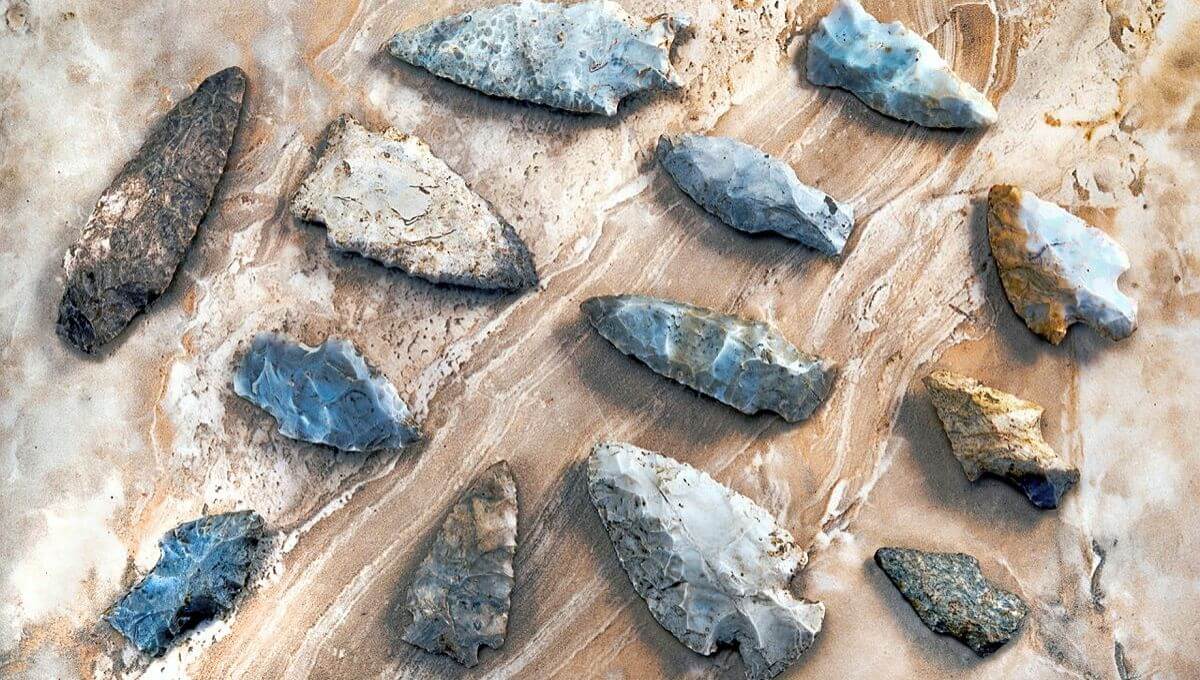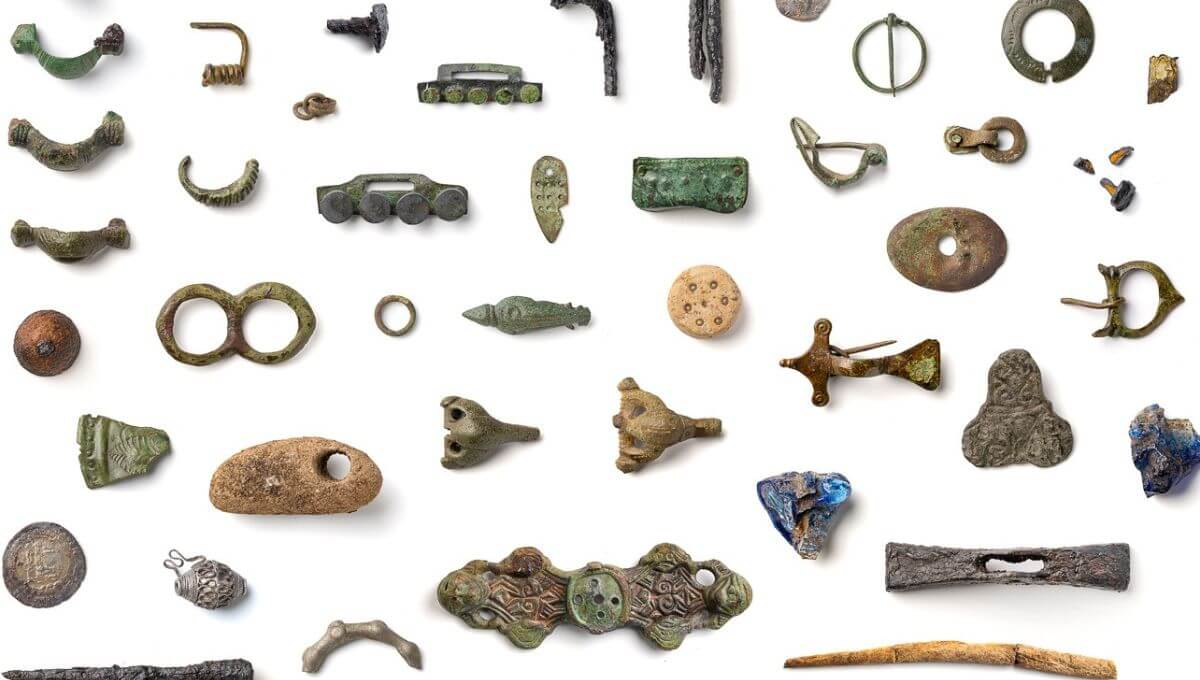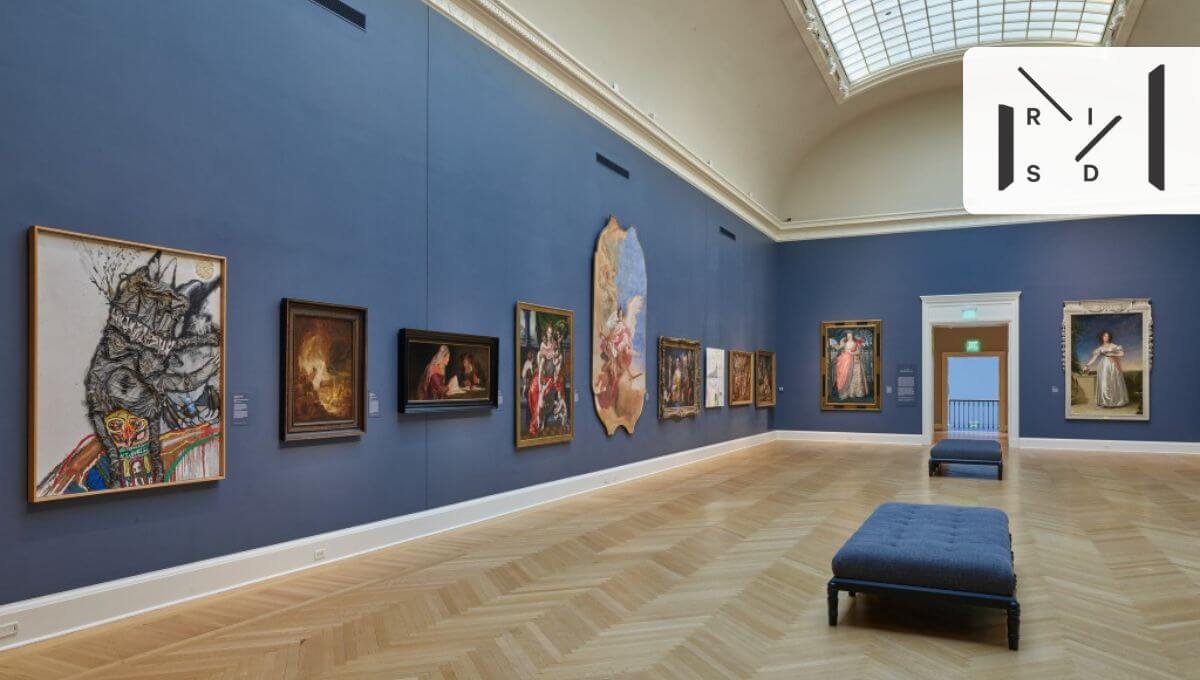
RISD Museum: A connected ecosystem for digital art collections
Galleries, Libraries, Archives and Museums (GLAMs) are unique in their responsibilities for preserving and showcasing cultural heritage, and the Museum of Art, Rhode Island School of Design (RISD Museum) is no exception. With thousands of digital content items to manage and distribute, they rely on advanced metadata capabilities and integrations to streamline processes and ensure full control.
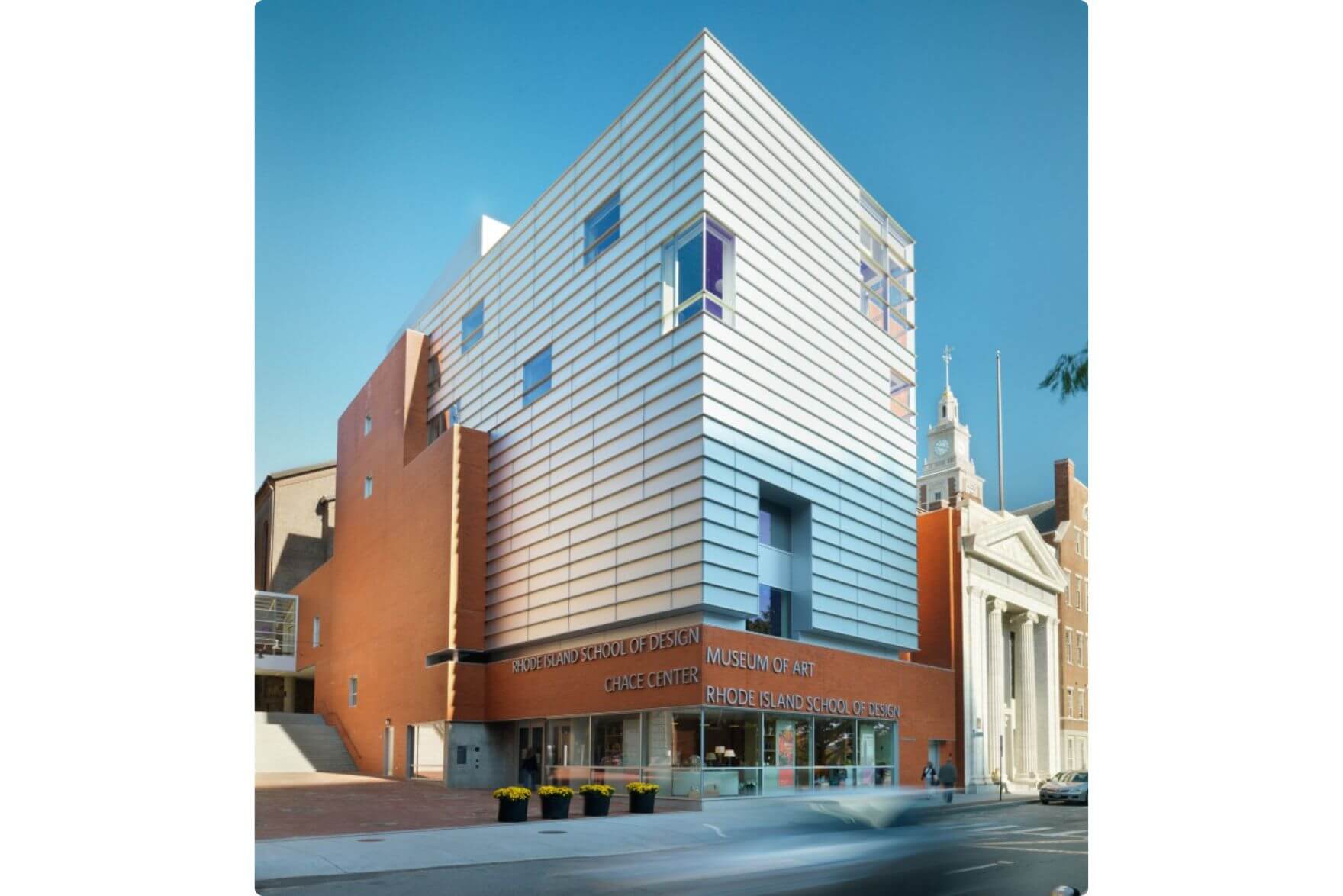
The Museum of Art, Rhode Island School of Design
Founded in 1877, the RISD Museum is a part of the Rhode Island School of Design (RISD), located in Providence, Rhode Island. The museum stores artworks and collections dating back to ancient times, but also including modern pieces. In total, their physical collections are made up of more than 100,000 different objects, whereas 1,700 can be viewed at the museum, and 84,000 can be viewed digitally on their website.
The museum aims to provide free public access to their collection through their website, showcasing the objects with associated information that is easily accessible.
In order to provide public access to their collection effectively, they decided to invest in a Digital Asset Management (DAM) solution, and in 2022 they implemented the Fotoware Content Platform (previously Picturepark) as a part of their digital ecosystem.
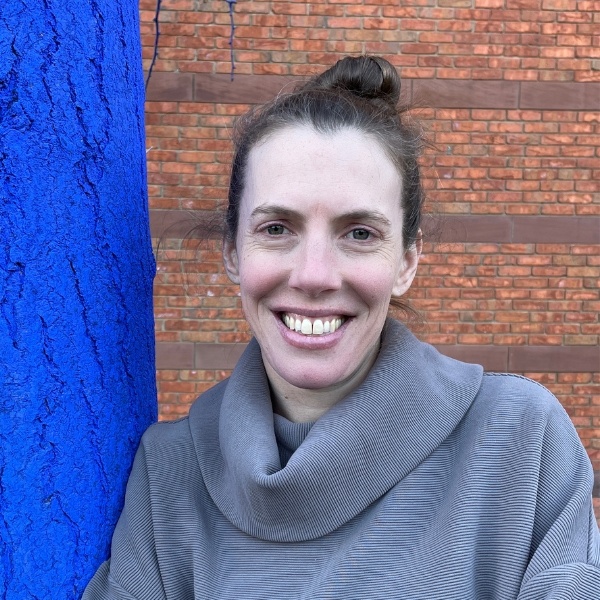
— "It is fundamental to the mission of the RISD Museum to provide access to the collection to as many people as possible, with as few barriers as possible. Fotoware Content Platform helps make that happen."
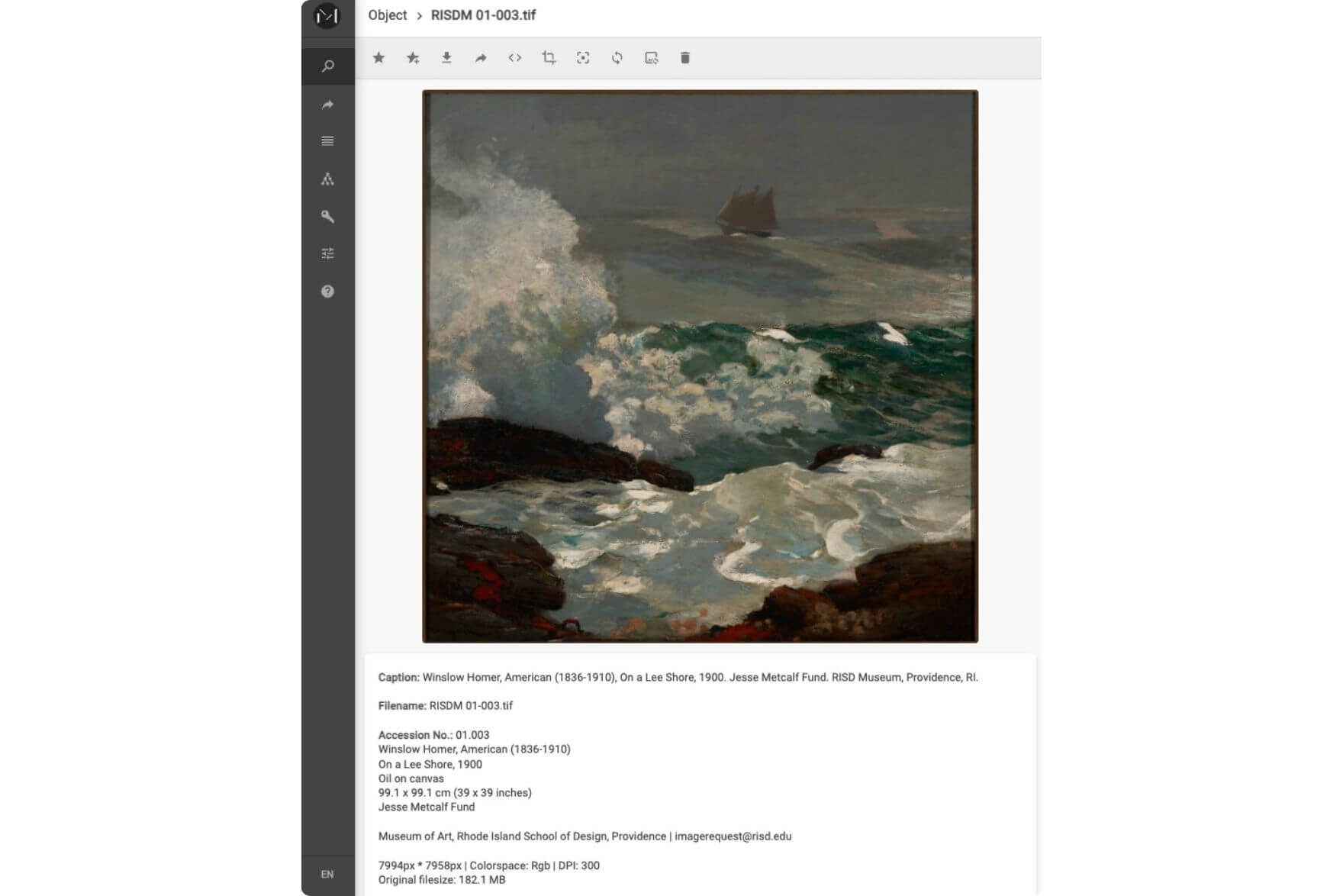
A connected ecosystem for image collections
Thanks to the Content Platform, the RISD Museum is able to create a fully integrated ecosystem for all digital assets and their associated data. The assets are stored as original files in the Content Platform, which fetches data directly from the Collection Management System, MuseumPlus, which in turn receives low resolution previews of the photos, as well as documents and metadata, associated with the photographed objects. Then, after checking the information and adding license information, the images are sent to the Museum’s Content Management System (CMS), Drupal, where they are available for the public to browse and download.
No images are stored in Drupal, instead, the CMS links to the originals – that are stored in Content Platform – using the CDN-powered API. Since the platform is cloud-based, there’s no need for local servers or back-ups, and the RISD Museum can securely host and manage all digital assets from one single repository, while seamlessly making them accessible on other channels as well.
Learn more: Beyond digitization - How DAM helps Museums manage their collections
— "Before linking our Drupal CMS to the Fotoware Content Platform we were managing, storing, and paying for our assets twice, leading to more errors and an increase of cost. Now we have one set of assets, all in one place."
A seamless publication workflow
The RISD Museum’s publication workflow starts with images being uploaded to the Content Platform, where they are first stored in a hidden workspace. Here, they are given a quick quality check, and then metadata is fetched directly from MuseumPlus, automatically tagging each image with the correct object information based on the filenames.
Once that is done, the editors add some additional metadata, including the copyright status. Just like all metadata adjustments, this is usually done to many assets at once, in order to save time and decrease the chance of human error.
Learn more: 5 essential Digital Asset Management workflows
— "With the implementation of Fotoware Content Platform we were able to transition from applying metadata to one asset at a time to 100’s or more at once, reducing errors and saving countless hours of work."
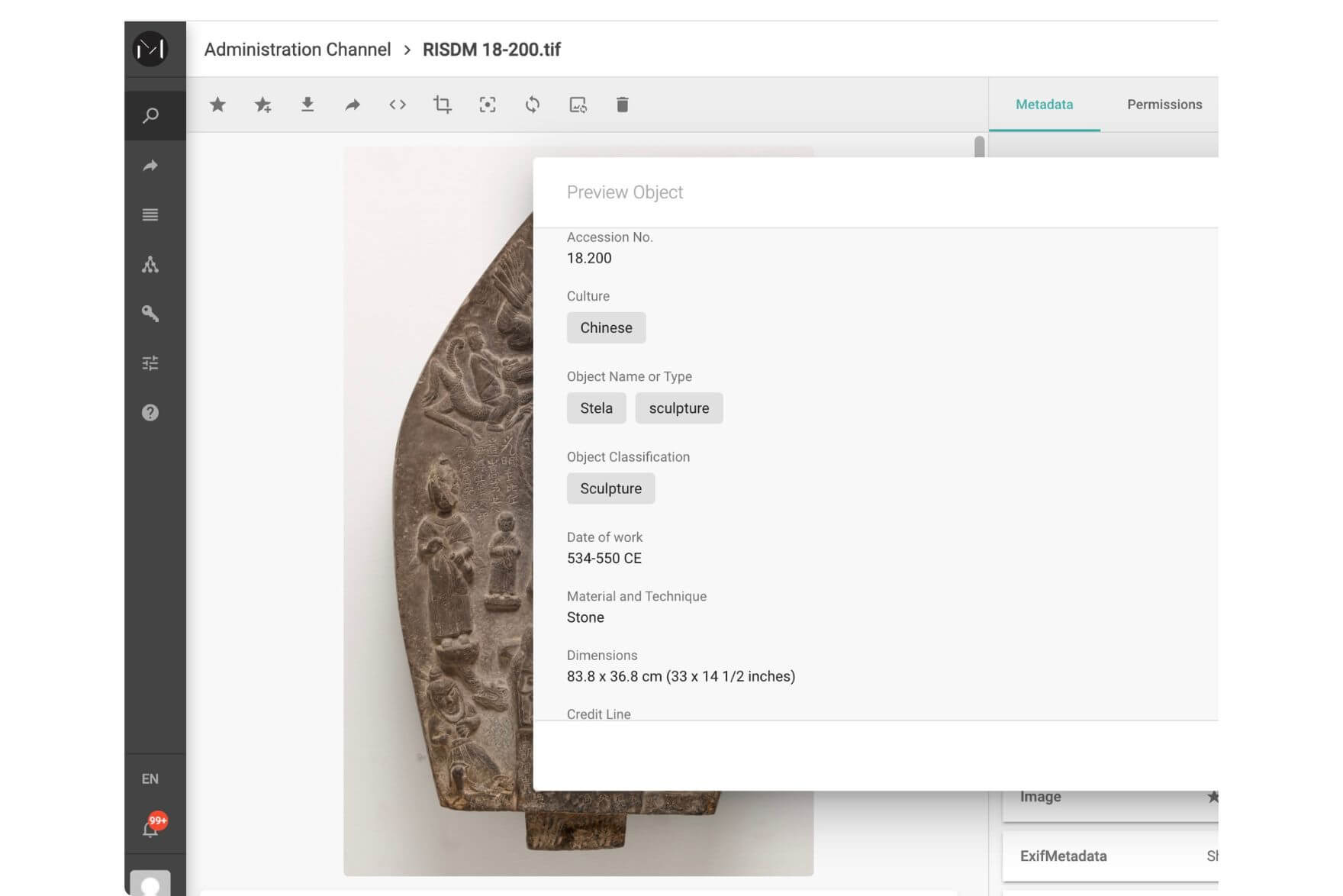
In the process of adding the metadata, permissions are also automatically updated based on the file type, ensuring that the files are always available to the right people. For example, raw files get updated with more limited permissions than .tiff files, since general users - as opposed to editor users - have no need to engage with them.
Once the content items are ready for publication, they are marked as “web ready”, an action that makes them accessible on the website at the next automatic sync, typically conducted at midnight. The editor then chooses one image representing the object to be marked as the “best image”, which will be the main image displaying the specific object.

On-demand webinar
See how the RISD Museum manages and distributes image collections with Content Platform.
Deep-zoom and visual tours
The RISD Museum also has another integration in the works: the showcasing tool, Micr.io, developed by Q42. By integrating Micr.io with the Content Platform and Drupal, they can enable deep-zooms and visual tours of selected images, further enhancing the viewer’s experience.
Deep zoom: Discover how the Micrio digital viewer allows your audience to explore he intricate details of digitized artifacts in stunning clarity - up to 150,000 pixels. This reveals fine textures, patterns, and artistic techniques, enhancing appreciation for the craftsmanship and historical significance of each piece.
— "The addition of deep zoom to our online collection images is very exciting! It will allow our website visitors to virtually dive into the works and see the materiality of each piece up close."
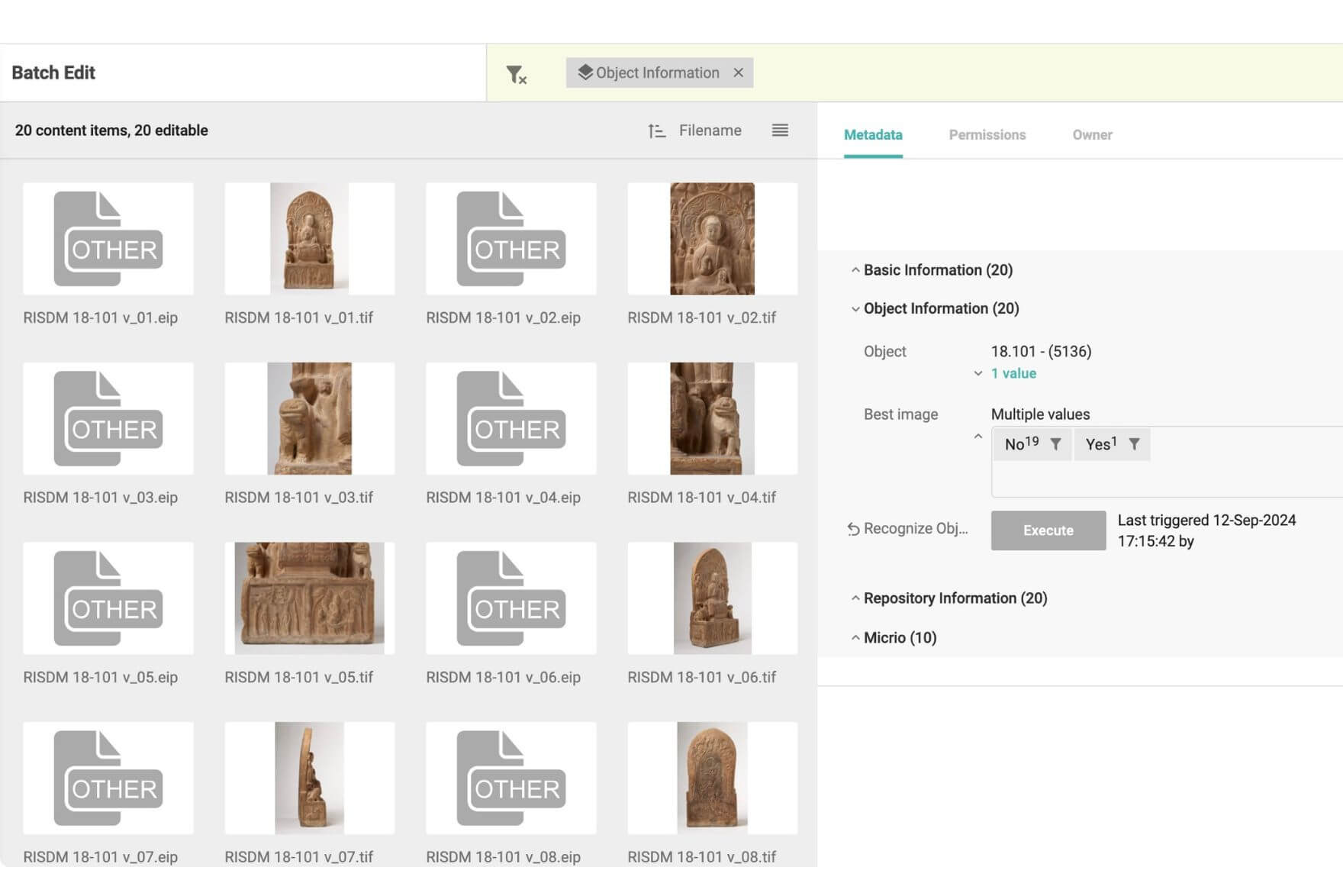
Object preservation
In addition to making collections available to the public, the RISD Museum also uses the Content Platform to track object conservation. This is facilitated by the metadata structures available within the platform, making it easy for the museum to group content items together based on project- and artifact IDs.
By searching for a specific ID, editors of the system can look through conservation images and data, including scanned treatment reports.
Read more: Digitizing Cultural Heritage - LIECHTENSTEIN. The Princely Collections

Let’s talk!
Would you like to enhance your Collections Management with a DAM? Reach out to one of our experts to explore the options.
